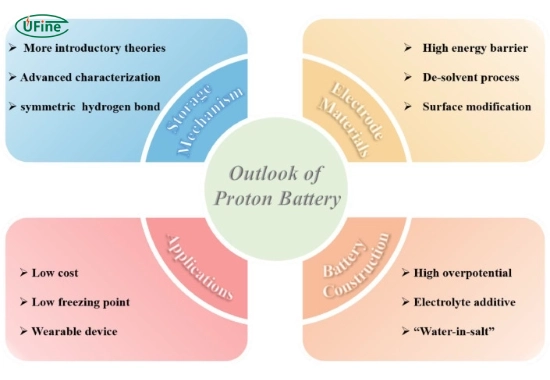How do proton batteries improve lithium cell performance in cold weather? They enhance energy efficiency, reduce degradation, and maintain stable output even in freezing conditions—making them a game-changer for cold-climate energy storage.
If you’ve ever tried to start a car, fly a drone, or use your phone in freezing weather, you already know one frustrating truth: lithium batteries don’t work well in the cold. Whether in northern Canada or atop the Himalayas, low temperatures can slash battery life, slow down charging, and even cause a total shutdown.
Enter the proton battery—a powerful emerging technology that promises to boost the cold-weather performance of lithium cells. This article explores how proton batteries work, why lithium-ion chemistry struggles in freezing environments, and how hybrid systems combining both battery types may redefine cold-weather energy solutions.
Part 1. What is a proton battery?
A proton battery is a next-generation rechargeable battery that stores and releases energy using hydrogen ions (protons). Unlike lithium-ion batteries, which rely on the movement of lithium ions through a liquid electrolyte, proton batteries use a proton-conducting membrane and carbon-based electrodes, making them more environmentally friendly and potentially more durable in harsh climates.
Here’s how it works in simple terms:
- Water is split into hydrogen and oxygen.
- Protons travel through a solid membrane to the cathode.
- Electrons flow through an external circuit, generating electricity.
- Protons and electrons recombine to form water again.
This closed-loop process avoids many safety and performance issues in lithium-ion systems, especially in extreme temperatures.
Part 2. Why do lithium batteries perform poorly in cold weather?
Lithium-ion batteries rely on liquid electrolytes that become sluggish or freeze when temperatures drop. This leads to several problems:
- 🔋 Reduced capacity: The battery holds less charge.
- ⚡ Slower charging: Charging takes longer or becomes impossible.
- 🔥 Higher internal resistance: More energy is lost as heat.
- ⚠️ Lithium plating: A dangerous condition that can cause permanent damage.
Lithium ions move more slowly at temperatures below 0°C (32°F), and chemical reactions inside the cell become inefficient. At -20°C (-4°F) or lower, performance can drop by up to 50% or more, making devices unreliable and shortening battery lifespan.
This is a significant concern for:
- Electric vehicles in cold regions
- Outdoor equipment like drones and GPS units
- Renewable energy storage in winter climates
Part 3. How do proton batteries help in low temperatures?
Proton batteries outperform lithium-ion batteries in cold weather because their internal chemistry is less sensitive to freezing temperatures.
Here’s why:
- ✅ Solid-state components don’t freeze like liquid electrolytes.
- ✅ Proton-conducting membranes maintain performance at sub-zero temperatures.
- ✅ Lower activation energy means reactions happen more quickly in the cold.
In a hybrid setup, proton batteries can preheat lithium cells, maintain backup power, or take over during periods when lithium efficiency drops. This makes them ideal for supporting lithium batteries in cold-weather applications.
Artikel Terkait: Do Lithium Batteries Freeze? Understanding Cold Weather Effects
Part 4. What makes proton batteries more stable in cold environments?
Let’s look at the materials and design that give proton batteries their cold-weather edge:
- Carbon Electrodes
Carbon is thermally stable and doesn’t expand or contract as much as other metals, which helps maintain structural integrity at low temperatures. - Proton Exchange Membrane (PEM)
This is the heart of the battery. It allows only protons to pass while blocking electrons and gases. PEMs like Nafion can operate effectively at temperatures as low as -20°C. - Water-Based Chemistry
Proton batteries use hydrogen from water, which is less reactive than lithium. This reduces the risk of freezing or dangerous reactions in the cold.
These materials continue functioning even when lithium systems fail, offering superior thermal tolerance and reliable output in freezing weather.
Part 5. How do proton batteries integrate with lithium cells?
This is where things get exciting.
Proton batteries and lithium cells can be combined into hybrid systems, leveraging the strengths of both:
- The high energy density of lithium
- The cold resistance of proton batteries
Such systems can be configured in several ways:
- 🔋 Parallel hybrid: Both batteries supply power, switching based on temperature.
- ❄️ Cold-start assist: The proton battery powers heating elements to warm lithium cells before use.
- ⚡ Backup power: When lithium output drops, the proton battery keeps things running.
This model is instrumental in electric vehicles and off-grid power stations where temperature swings are common.
Part 6. Real-world use cases for proton-lithium hybrid systems
- 🚗 Electric Vehicles (EVs)
In places like Norway, Canada, and northern China, EVs struggle with battery drain in winter. A hybrid setup could:- Power heaters for lithium cells
- Extend driving range
- Improve charge acceptance in cold garages
- ☀️ Off-Grid Solar Systems
Solar energy storage needs to work day and night, rain or snow. In cold regions like Alaska or Siberia:- Proton batteries can store daytime solar energy
- They can release stable power at night when lithium loses efficiency
- 🚁 Drones and Remote Equipment
Drones, weather stations, and rescue devices often operate in extreme cold. A proton battery can:- Ensure reliable startup
- Keep GPS and sensors active
- Serve as an emergency backup
Part 7. Environmental and safety advantages
Proton batteries are not just cold-ready—they are eco-friendly and inherently safer:
- 🌱 No rare earth metals: Unlike lithium, there’s no need for nickel, cobalt, or manganese.
- 💧 Uses water as a hydrogen source.
- 🔥 Non-flammable: No thermal runaway or explosion risk.
- ♻️ Easier to recycle: Materials are benign and widely available.
This makes them ideal for sustainable energy systems, especially in sensitive environments like the Arctic or mountainous forests.
Part 8. Barriers to adoption and future outlook
Proton batteries aren’t perfect—yet.
Current Challenges:
- ⚖️ Lower energy density than lithium (though improving)
- 🏭 Scaling manufacturing is still in the early stages
- 💰 High initial costs for materials and R&D
But these issues are being addressed. Research teams, especially in Australia, the UK, and Japan, are already making breakthroughs in:
- Membrane efficiency
- Compact designs
- Cost-effective carbon electrodes
Looking Ahead:
Within the next 5–10 years, we could see proton batteries:
- Powering cold-region EVs
- Supporting renewables in polar areas
- Used in military and space exploration gear
The combination of cold tolerance, safety, and eco-friendliness makes proton batteries a serious contender for the future of energy.
Part 9. Proton battery vs lithium-ion: A quick comparison
| Feature | Proton Battery | Lithium-Ion Battery |
|---|---|---|
| Works in sub-zero temps | ✅ Yes | ❌ Limited |
| Energy density | ⚠️ Lower (for now) | ✅ High |
| Charging time | ✅ Fast in the cold | ❌ Slower in the cold |
| Environmental impact | ✅ Low | ❌ High (mining, toxins) |
| Fire risk | ✅ Very low | ❌ Moderate to high |
| Commercial availability | ❌ Limited (R&D phase) | ✅ Widely available |
Part 10. What industries benefit most from proton battery innovation?
Proton batteries can transform the following industries:
- Automotive: EVs, trucks, buses in cold regions
- Telecom: Base stations in remote, cold areas
- Aerospace: Satellites, high-altitude drones
- Disaster relief: Emergency devices in freezing zones
- Scientific research: Polar stations, mountain labs
As technology matures, these sectors will lead the way in adopting proton-lithium hybrid systems.
Part 11. FAQs about proton battery
What is a proton battery?
A proton battery is a type of rechargeable battery that stores energy using hydrogen ions (protons) and carbon electrodes. Proton batteries offer better cold-weather performance and environmental safety than lithium-ion batteries.
Why do lithium batteries fail in cold weather?
Lithium batteries struggle in low temperatures due to sluggish ion movement and electrolyte freezing, which lead to reduced capacity, slower charging, and higher internal resistance.
Can proton batteries be used with lithium batteries?
Yes. They can work together in hybrid systems, where the proton battery supports lithium cells during cold starts or low-efficiency periods.
Are proton batteries safe?
Absolutely. They are non-flammable, contain no volatile chemicals, and use water-based electrochemistry, making them much safer than traditional lithium-ion batteries.
When will proton batteries be available commercially?
Proton battery technology is still developing, but commercial applications, especially in EVS and renewable energy sectors, are expected within the next 5 to 7 years.
Related Tags:
More Articles

How to Choose the Best Floor Scrubber Battery for Commercial Cleaning?
Selecting the ideal floor scrubber battery ensures a long runtime, rapid charging, and minimal maintenance for efficient commercial cleaning operations.
Battery for Blower vs Battery for Leaf Vacuum: Which One Should You Choose?
Battery for blower vs leaf vacuum—learn the key differences in power, fit, and runtime to choose the right battery for your outdoor tool needs.
How to Choose the Right Battery for Blower?
Choosing the right blower battery? Consider voltage, capacity, chemistry & usage. This guide helps match the best battery for peak performance.
How to Choose the Best Insulated Battery Box for Lithium Batteries?
Choosing the Best Insulated Battery Box for Lithium Batteries? Discover key factors such as size, material, and safety for optimal protection and performance.
7 Critical Elements on a Lithium Battery Shipping Label
What must be on a lithium battery shipping label? Learn 7 key elements to ensure safety, legal compliance, and correct handling across all transport modes.





